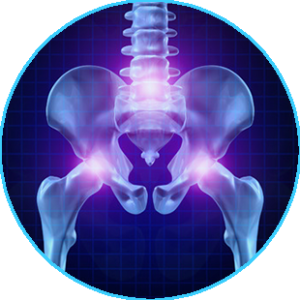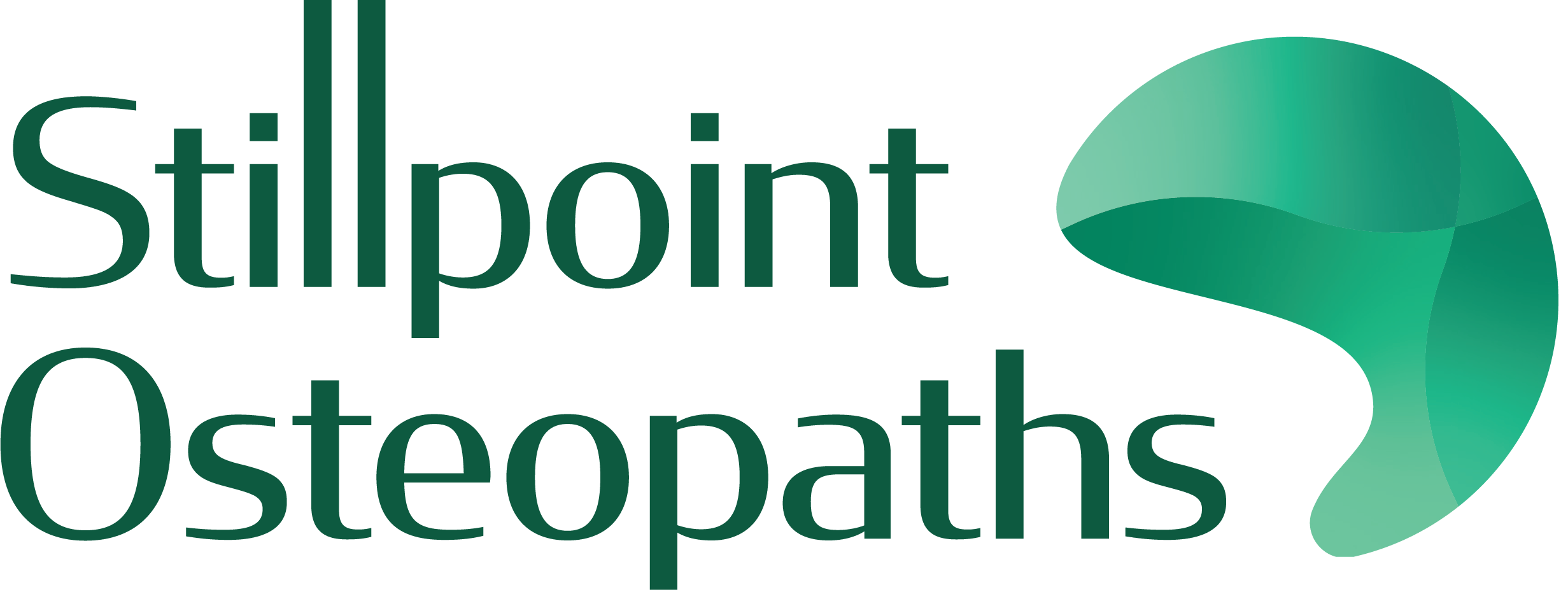What we treat
Common Reasons For Treatment:
Maintenance of health
Back and neck problems
Sciatica
Intervertebral disc injuries
Joint pain, knees & hips etc
Traumatic injuries, sporting accidents, etc
Repetitive strain injuries (RSI)
Headaches/migraine
Chronic pain
Fertility & Pregnancy:
Fertility for both men and women
Difficulties conceiving
Back, hip, groin pain
Difficulty breathing
Preparing the body for labour
Babies/Childhood Issues:
Birth trauma, flat shaped heads.
Colic, constant crying
Spilling/ reflux
Sucking difficulties/breastfeeding
Glue ear
Blocked tear ducts, sticky eyes
Learning difficulties
Developmental delays
ADHD, Autism
General Health Concerns:
Recurrent respiratory infections
Sinus congestion
Constipation
Recurrent urinary tract infections (UTI’s)
Period pains

Pain Management
At Stillpoint Osteopathic centre we are committed to helping those living with pain, whether acute from a recent trauma or accident; or chronic due to poor posture or injury.
How can cranial osteopathy help with pain?
Your osteopath will identify, treat and try to ascertain what made your body vulnerable in the first place (e.g. previous trauma, car accident, previous fracture).
Back Pain – Back pain is very common in New Zealand affecting up to 80% of the population. Your osteopath understands how debilitating back pain can be and has experience with treating acute and chronic back pain.
Sciatica – This is a radiating pain caused by pressure on the sciatic nerve (in the lower back), which can run from the lower back down the back of one or both legs. Tingling, numbness, or weakness can also be symptoms of sciatica.
Neck Pain – Neck pain is often a result of poor posture, a pinched nerve or issues from a neck injury.

Paediatric Osteopathy
Paediatric osteopathy – an effective and gentle treatment – can support children through all stages of their development.
How can osteopathy benefit your child?
Listed below are some examples of conditions that can benefit from osteopathic treatment:
- Ear Infections / Glue ear
- Blocked tear ducts, sticky eyes
- Learning difficulties
- Developmental delays
- ADHD, Autism
- Sleep problems
- Brain Injury – for more information on where to find support please visit www.braininjuredchildrentrust.co.nz

Osteopathic care of babies
Why would I choose Stillpoint Osteopaths for my baby?
Stillpoint osteopaths provide mindful health care for your baby. They hold a safe space that may provide a platform for change in all areas physical, emotional, and spiritual. When approached about the care of a baby, they encompass the baby, their family, and their support network. Our osteopaths understand the unique nature of your baby and their experiences and care embraces this
concept.
How do Stillpoint Osteopaths care for babies:
Stillpoint Osteopaths use Osteopathy in the Cranial field (OCF) also known as Cranial Osteopathy as an assessment and treatment approach. When indicated and appropriate this gentle form of care may be able to support your baby’s body to ease tensions, help them unravel strains and allow their body to relax.
What do osteopaths assess or look for in my baby?
Osteopaths gently assess your babies’ body. They examine the muscles, the joints of their spine, arms, legs, mouth area and their head. We look to ensure that your babies’ muscles and tissues have the right tone, that the joints can move through their full range of motion and that they are reaching their developmental milestones.
Your osteopath can assess if your child has body strains or limited joint range of motion that could be associated to the symptoms you might be coming to chat to us about.
How does a baby get strains in their body?
In the womb babies can be positioned for long periods in one place. The Labour process involves pressures and forces. Labour can be short or long. It can be simple or complicated. Interventions
may have been involved forceps, ventous extraction or caesarean sections. Occasionally babies fall, roll off things, or can be accidently dropped.
Every experience is unique, and each experience has the potential to create strains and tissue tension in your babies’ body. Sometimes these strains can impact function.
Unlike adults, their body tissues are not like ours. Their bones and muscles are still developing and depending on their age their immune system, digestive and nervous system are not fully developed. Hence stresses and strains can impact children differently to us.
Why would I choose osteopathic care for my baby?
Osteopaths have the diagnostic and management skills to evaluate and examine your baby, infant or toddler and advise you on an appropriate course of action if any is required. Osteopaths have the skills to know when to refer you if further medical or specialist assessment or support is needed.
What sort of complaints do parents of babies consult osteopaths about:
- Constipation
- Head shape changes: flat or ridged
- Poor movement of the neck area: difficulty turning one way or holding head in awkward posture.
- Concerns about milestones: not reaching their milestones or doing them differently e.g. they crawl but not quite like others do.
- Recurrent infections: ears, throat, lung, bladder etc
- Tummy pain: wind pain, difficulty winding, difficulty burping
- Spilling or gastroesophageal reflux
- Sleeping difficulties: only cat naps, gagging choking while asleep, tummy pains waking baby.
- Feeding difficulties: poor attachment, damaging of nipple, poor mouth opening, poor tongue movements, fussing pulling on and off, not gaining weight well.
- Constant crying
What should I bring to an osteopathic consultation for my baby?
- Your babies Plunket book
- Mum’s pregnancy and birthing notes and any hospital discharge notes relevant to mum and baby if available.
- The names of any medication your baby has been prescribed.
- Any specialist or medical reports
- Any radiology or imaging reports that your baby may have had since birth.
- Any family member or support person that you feel is needed to embrace the care of your child.
How long does an Osteopathic Consultation take?
Initial consultations for babies, toddlers, and children are 60 minutes. Follow up consultations are 30 minutes.
What will my baby and I experience when I visit a Stillpoint Osteopath?
- Your osteopath will welcome you to our practice.
- Once settled they will take a full case history for your baby; this will include the mother’s pregnancy and birthing experience. Information about feeding, sleeping, bowel motions etc. This collection of information allows your osteopath to along with an assessment come up with a diagnosis and management plan.
- The osteopath will then examine your baby: this will include moving arms and legs and body in small amounts to check joint range of motion. They will palpate or feel the muscles and joints with
their fingers and hands. Some clothing may need to be removed if areas need to be looked at for
instance examining rashes, hip concerns etc - Your osteopath will also carry out an Osteopathy in the Cranial Field (OCF) assessment: This involves your osteopath placing their hands-on certain parts of your baby’s body like their head or back or tailbone region. They will then assess the smaller tissue shape changes and expressions of motion. No force is involved, and this is a form of listening or feeling with our hands. Feeling for the patterns of strain that might be present and expressed by their body’s tissues.
- Your osteopath will then explain their findings, discuss their working diagnosis, discuss treatment options and an osteopathic treatment plan if appropriate or potential referrals if needed.
- If time permits and you have consented, a treatment may be administered in the first session. This may last 5-10 minutes.
What if my baby cries all the time?
Stillpoint Osteopaths are skilled at working with babies who are upset. We understand that many parents seek our help due to their baby being unsettled and unhappy. Your osteopath will try to help you and your family calm your baby or find ways of working together. They will try different positions, breastfeeding, and distractions.
What will my baby experience during a treatment?
- There is no force involved when using this form of treatment approach (OCF).
- Your baby can be treated in different positions depending on their needs: lying down on a treatment table with you sitting beside them, breastfeeding, on your lap or while you support them
upright. Your osteopath will find the most comfortable option for you and your baby. - Treatments can last between 15 and 20 minutes.
- Babies who are unsettled, tired or hungry can cry during treatment sessions. Your osteopath will have age appropriate toys to help distract and entertain them or accommodate feeding during
treatment if required. - Treatments do not hurt. Babies cannot tell us that it hurts however adults who experience this treatment do not complain of pain.
What can my baby experience after a treatment?
Your osteopath will explain what changes have occurred during the osteopathic treatment. They will discuss if your baby might experience any changes after the treatment: this could be changes to symptoms you have discussed, what you might expect in the first 24-48 hours and what you might expect after 3-5 days.
How often will my baby need to be treated?
Every baby is different. The reasons why they may have developed some symptoms will be unique to them. Osteopathic management therefore is tailored to the needs of your baby and their
supporting family. Your osteopath will discuss their recommendation at the end of your initial consultation and whenever your treatment plan is updated.
How quickly can I expect results?
Every baby and family are unique. Often changes can be experienced after one session others it can take 2-3 sessions before improvements are seen. Your osteopath can talk to you about what you might be able to expect from osteopathic management and care.
